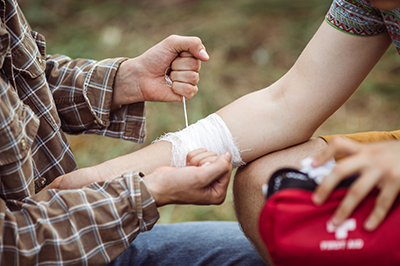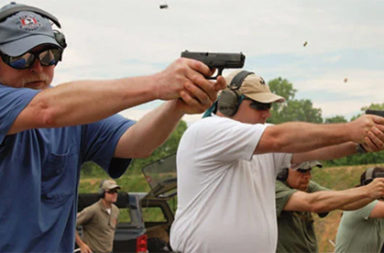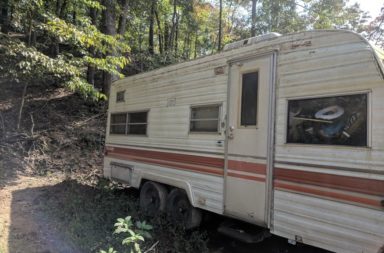
If you spend a lot of time Outdoors, you know that the remote nature of the wild creates specific challenges in wilderness medicine. Emergencies far from civilization are trickier to handle than other situations. Wilderness first responders require special skills and training to overcome the distance from professional medical care and rescue.
The following tips can help you stay safe while you are in the wild. Remember, some situations require the help of a professional in wilderness medicine.

First Aid
Perhaps the most important equipment for a wilderness first responder is a first aid kit. If possible, prepare by taking a remote first aid training course.
The kit ought to contain the following:
- Sterile dressings
- First aid tape
- Antibiotic ointment
- Vinyl gloves
- Needle, thread, and small scissors
- Over-the-counter pain medicines
- Waterproof adhesive bandages
- Tweezers
- Iodine solution
- Sterile water for wound cleansing
- Antihistamine medication
- Topical allergy cream
- Salt tablets
- Emergency devices to treat anaphylactic shock after an allergic reaction

Shock
Shock can occur following an injury, even in minor cases. The term refers to the patient’s body essentially beginning to shut down. Symptoms include a weak and rapid pulse, clammy skin, and overall feeling weak and faint.
Treatment begins with treating the underlying medical emergency. Work to stop the bleeding, restore breathing, and treating broken bones or fractures. Once the patient is more stable:
- Keep the patient warm and safe
- Elevate the legs if there are no chest or head injuries
- In the case of head or chest injuries, elevate the upper body
- Place an unconscious person face down to prevent aspirating on vomit or blood
When Someone Has Stopped Breathing
Begin mouth-to-mouth resuscitation as quickly as possible.
If you have a pocket face mask available, use it between yourself and the patient.
- Place the patient on their back and tilt the back up the head up to open the airway
- Pinch the nostrils to prevent air escaping and place your entire mouth over the victim’s mouth
- Blow into the patient’s mouth and watch for the chest to rise. If the chest doesn’t rise, check for blockages in the airway.
- Repeat twelve to fifteen times per minute

Bleeding
Control blood flow by applying a clean bandage to the wound and adding pressure. If the bleeding is severe find the pulse nearest the injury and apply pressure there. In worst case scenarios where the bleeding persists, place a tourniquet between the injury and the heart and tighten.

Fractures
While you cannot tell in the wilderness whether or not a bone has been fractured, there are a few signs that can help give you an idea. Treat the injury as if they are a fracture if you are in doubt.
Signs of a fracture include:
- Sings of deformity in the injured area
- The inability to apply pressure or weight on the area without significant pain
- Grating sounds or sensations when the area is moved
- Pain in the affected area where the fracture is suspected
Treating a fracture in the backcountry is tricky. Getting the injured person to emergency medical help as quickly as possible is recommended. If the bone has broken through the skin, do not try to push it back in the injured area. If you can, splint the fracture. Create a splint by:
- Place sticks, rolled up newspaper, thin pieces of wood, or other sturdy objects on either side of the injury. Be sure to include the joint above and below if possible
- Gently tape or tie the splint together avoiding the injured area as much as possible
- While the splint should be firmly tied or taped in place, it should not be so tight the circulation is cut off to the area

Dislocation
A bone becomes dislocated when the surrounding ligaments or tissue are torn and the bone is able to move out of the joint. Immobilizing the affected area is the best treatment for a dislocation, at least until medical help can be sought. Never try to shove a dislocated bone back into place without proper remote first aid training.

Sprains
While not as serious as a fracture, a sprain can be extremely painful. The first rule for treating sprains is to give it time to heal without movement. If the sprain occurs in the ankle or leg, stay off of it for at least a full day. Sprained wrists should be immobilized for the same time period.
Treat a sprain by applying ice during the first twenty-four hours. Follow with heat over the next day. Pain medication can be taken.

Concussions
A concussion can become serious and medical attention should be given to serious head injuries. In the meantime, give the injured person pain medications, keep them warm, and allow them to rest.
Signs the concussion may be serious include vomiting, fainting, convulsions, or unresponsive pupils. Consult wilderness first responders to assess the severity of a suspected concussion.

Hyperthermia
Hyperthermia is the opposite of hypothermia. It is characterized by an elevated body temperature. Sun exposure, excessive exercise in the heat, and poor physical shape can exacerbate hyperthermia. Heat exhaustion and sunstroke are forms of hyperthermia.

Heat Exhaustion and Sunstroke
Over-activity and hot weather combine to create dangerous conditions. Heat exhaustion and sunstroke can occur with little warning. Signs of sunstroke are overexposure to the sun, dizziness, nausea, flushed skin in the face, rapid heartbeat, and headache. Heat exhaustion is similar but can also include a weak pulse, fainting, and signs of dehydration.
Treatment includes drinking plenty of fluids, rest, and administering salt tablets.

Muscle Cramps
Excessive lactic acid or salt loss can cause muscle cramps. Rest and gentle stretching can help restore the muscles. Drink plenty of fluids and use salt tablets as directed.

Burns
A burn can range in seriousness from simple sunburns to a life-threatening third-degree burn. Sunburns are generally first-degree burns. Second-degree burns are characterized by blisters. The skin in a third-degree burn can appear charred or pale and the area can be numb. Seek medical treatment immediately if you suspect a third-degree burn.
All burns can be treated by administering cool, sterile water to help stop the damage and prevent infection.

Snowblindness
Blowing snow in windy conditions can cause your eyes to become irritated, excessively watery, and scratchy. Symptoms can worsen to loss of vision, headaches, and halos around lights. Rest, cold compresses, and pain medication can be used for treatment. Vision should be restored in around eighteen hours.

Hypothermia
Hypothermia occurs when the body temperature falls below normal levels. Cold, wet, and windy conditions can rob the body of its heat. Minor symptoms include shivering, being unable to get warm, and numbness. Hypothermia reaches dangerous levels when the victim becomes unresponsive and the pulse and respiration rates slow down.
Hypothermia is treated by helping keep the victim warm. Make sure to move them inside out of the cold and remove wet clothing. Keep them awake and administer warm liquids.

Blisters
Prevent blisters by wearing the right size of footwear. If you feel discomfort remove your boots and tape the area with first aid tape to prevent further blistering.
If a blister is the result of a burn or a sunburn, treat as you would for those conditions. Wash an open blister caused by ill-fitting boots or shoes with clean, cool water and antibiotic ointment.

Headaches
Excessive sweating, high altitudes, or tension can cause a headache in the backcountry. Treat accordingly with pain medication. Drinking too much water over several days without taking salt tablets can cause water intoxication and severe headaches. Be sure to use salt tablets and watch for signs of dehydration.

Snakebites
While death from snakebite is not common, snakes can be everywhere in the wild. Non-venomous bites do not require emergency medical treatment. Poisonous snake bites are an emergency situation and require medical treatment.
Changes in skin color are good indications the bite was caused by a venomous snake. Keep the person calm and reassure them they will be okay. Keep the injury below the level of the heart in order to slow the blood flow. Monitor vital signs and transport the victim to emergency care as fast as safely possible.

Bee Stings
A bee sting is rarely serious and usually will not require medical treatment unless the person is allergic. Cleanse the sting and gently remove the stinger by scraping a knife blade over the affected area. Reduce swelling by applying a cold compress and administering ibuprofen.
If an allergic reaction is suspected, seek immediate medical attention.
Conclusion
Spending time outdoors especially in remote wilderness and backcountry areas requires thoughtful preparation. Always carry a cell phone and extra power sources. Never take off for a remote area without letting someone else know where you will be and how long you should be gone in case of an emergency situation.


